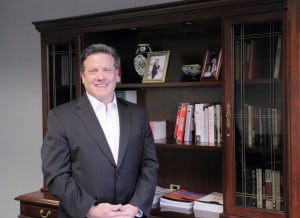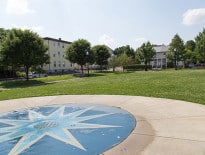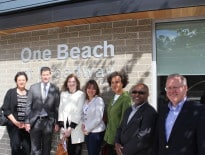Joseph Walsh
Title: President & CEO, Direct Federal Credit Union
Age: 54
Experience: 31 years
When Joe Walsh joined Direct Federal Credit Union more than 20 years ago, it wasn’t long before he started telling friends and family, “I think I could retire here.” With Deloitte & Touche and Bank of Boston on his resume, they thought he was crazy. But in 2014, he succeeded former CEO David Breslin, and now he spends his energy growing the credit union’s membership without growing its footprint. When he’s not thinking about tech or competitive rates, he’s probably doing something outside – all year round.
Q: You’ve made technology a priority since becoming CEO; what are some of your newer initiatives in that area?
A: More recently, we’ve started to apply technology more aggressively to our internal operations, primarily to support our member service initiatives, as well as our operational excellence and our continual improvement initiatives. Everything we’ve built for our members to be able to do business in an efficient, user-friendly way; we’re now striving to do that for the employees.
In terms of the service side, last year we introduced a prism, a member information system, and it’s simply a place where every interaction that we have with a member – be it an account opening, an account closing, a service issue or question they might have – it all gets registered in this centralized service system, so if a person has to follow up with another call, we can go to the system and look at their history of all the interactions they’ve had with us, rather than require that they retell their story.
We also see it playing a role as we develop our inside sales function over the next couple years. We also see it as a way to identify products and services that could really help members and to try to get them to acquire that product or service.
Q: Direct Federal recently reentered the indirect auto market. Why did you exit it, and why did you get back into it?
A: We originally entered the indirect market in late 2002 and we were in it through most of 2007, and we were pretty successful. We had grown the indirect portfolio to just over $100 million. The biggest part of our loan portfolio were our second mortgage lines of credit, our HELOCS. So in 2008, when the bubble burst and unemployment started go up, the combination of those two things presented a lot of challenges for our members who had HELOCs, and in turn for ourselves.
Really in the interest of capital preservation, we wanted to maintain a very, very high capital ratio. We wanted it to be well over 10 percent, and in fact we’re up to 16 percent. We wanted to make sure we were growing the balance sheet only in the areas that were of utmost importance to us, and at the time, we deemed indirect to not be one of those areas. So we exited the market and gradually let the indirect portfolio run off.
Once the real estate market rebounded, unemployment started coming down and we realized we could pretty much grow whatever segments of the loan portfolio that we wanted, we knew that indirect was a market we wanted to get back into. We rehired our old dealer rep – he’s been on board with us for about a year now. In May we just went over the $40 million mark.
Q: Last year, you grew membership to nearly 25,000. Direct Federal Credit Union has exactly one branch, so how did you do that?
A: To be perfectly frank, we don’t think of it as increasing membership, but we focus on selling products, home equity lines, first mortgages, Visa cards. … When we get new members, that’s great.
Given the fact that we have the one location and that most of our members want to do business with us through these A&D channels, we have a very low operating expense ratio. The industry runs an operating expense ratio of about 3.5 percent. Ours is a full 100 basis points lower than that. We’re at 2.5 percent, and that’s high for us. My intention is to get that down to 2 percent over the years to come.
Because our operating expenses are so low, we can offer loan rates that are lower than the competition, deposit rates that are higher than the comps, and we don’t charge a lot of fees. To quantify that for you, our home equity rate, I think, is the best in the market. We’re at prime minus 75 basis points, which right now would be 2.75 percent and I’m pretty confident that’s the best in the market.
The reason we’re able to do all of that is simply because of that 1 percent advantage in operating expense ratio.
By design, we spend about double what a credit union our size would spend in marketing. Most credit unions, most community banks, would spend about 10 basis points of assets on marketing efforts, so for a credit union our size, we would spend $400,000 or 500,000. In 2015 we spent over $800,000 and in 2016 we’re planning on spending over $900,000. We’ve been absent from the market. Our brand hasn’t been prominent in the market for quite some time, so we’re making a concerted effort to really get the Direct brand reintroduced to the Eastern Massachusetts market.
Walsh’s Top Five Movies (In No Particular Order):
- Waking Ned Devine
- A Bronx Tale
- The Shawshank Redemption
- Good Will Hunting
- Christmas Vacation




 |
| 



